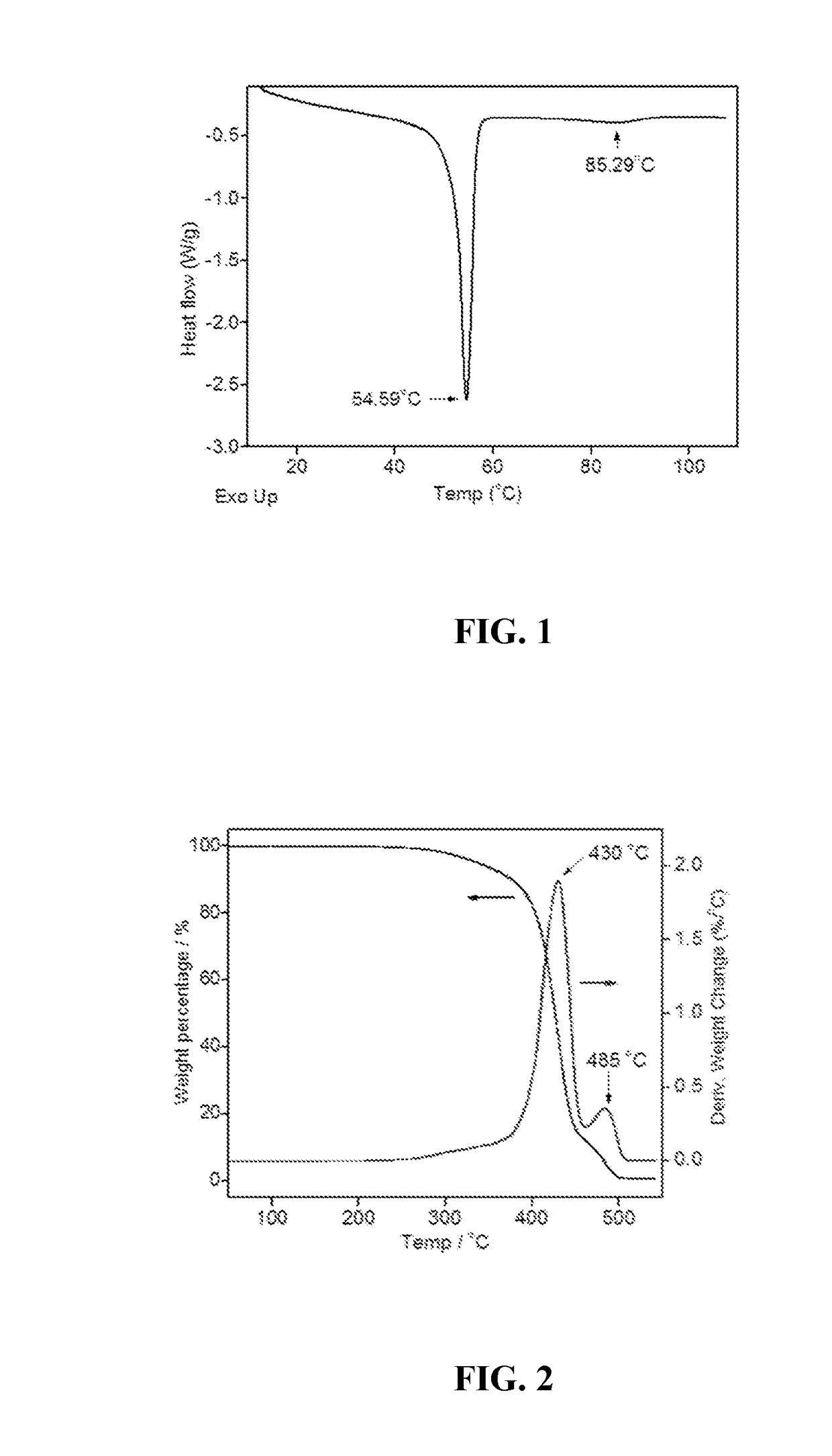Low printing temperature filaments for 3D printing
a three-dimensional printing and printing bed technology, applied in the direction of additive manufacturing process, additive manufacturing apparatus, liquid additive manufacturing, etc., can solve the problems of high printing and printing bed temperature required, difficult to print, and brittle, and achieve the effect of low printing temperatur
- Summary
- Abstract
- Description
- Claims
- Application Information
AI Technical Summary
Benefits of technology
Problems solved by technology
Method used
Image
Examples
example 1
[0021]The polycaprolactone and a low melting point polymer of ethylene-vinyl acetate were dried at 40° C. for 4 hours. After that, a mixture of polycaprolactone (79.3 wt %), the low melting polymer with a melting point of 80-90° C. (20 wt %), antioxidant B215 (0.5 wt %), and plasticizer white oil (0.2 wt %) was heated at 130° C. to melt-mix, then cooled and pelletized. The pellets were then extruded through a single screw extruder at 115° C. to obtain a filament with 1.75 mm diameter. The fabricated filament was printed using a fused filament fabrication 3D printer and its printing temperature and the temperature of the printing bed is shown in Table 1. FIG. 1 depicts a differential scanning calorimetry (DSC) curve showing the melting characteristics of the prepared filament. FIG. 2 depicts a thermogravimetric analysis (TGA) curve showing the decomposition process of the prepared filament.
example 2
[0022]The polycaprolactone and a low melting point polymer of ethylene-vinyl acetate were dried at 40° C. for 4 hours. After that, a mixture of polycaprolactone (78.5 wt %), the low melting point polymer having a melting point of 60-70° C. (20 wt %), antioxidant B215 (0.5 wt %), and plasticizer polyethylene wax (1 wt %) was heated at 110° C. to melt-mix, then cooled and pelletized. The pellets were then extruded through a single screw extruder at 80° C. to obtain a filament with 1.75 mm diameter. The fabricated filament was printed using a fused filament fabrication 3D printer and its printing temperature is shown in Table 1.
example 3
[0023]The polycaprolactone and a low melting point polymer of polyethylene glycol were dried at 40° C. for 4 hours. After that, a mixture of polycaprolactone (79 wt %), the low melting polymer having a melting point of 60-70° C. (20 wt %), antioxidant B215 (0.5 wt %), and plasticizer polyethylene wax (0.5 wt %) was heated at 110° C. to melt-mix, then cooled and pelletized. The pellets were then extruded through a single screw extruder at 100° C. to obtain a filament with 1.75 mm diameter. The fabricated filament was printed using a fused filament 3D printer and its printing temperature is shown in Table 1.
PUM
| Property | Measurement | Unit |
|---|---|---|
| Temperature | aaaaa | aaaaa |
| Temperature | aaaaa | aaaaa |
| Temperature | aaaaa | aaaaa |
Abstract
Description
Claims
Application Information
 Login to View More
Login to View More - R&D
- Intellectual Property
- Life Sciences
- Materials
- Tech Scout
- Unparalleled Data Quality
- Higher Quality Content
- 60% Fewer Hallucinations
Browse by: Latest US Patents, China's latest patents, Technical Efficacy Thesaurus, Application Domain, Technology Topic, Popular Technical Reports.
© 2025 PatSnap. All rights reserved.Legal|Privacy policy|Modern Slavery Act Transparency Statement|Sitemap|About US| Contact US: help@patsnap.com

